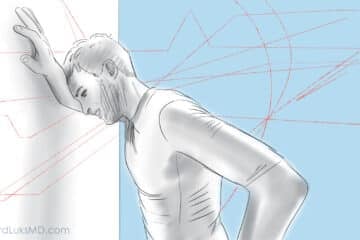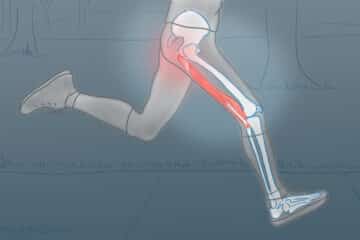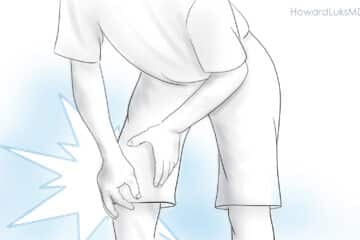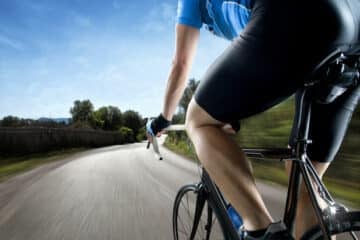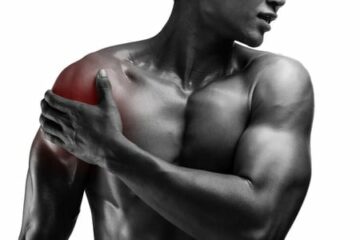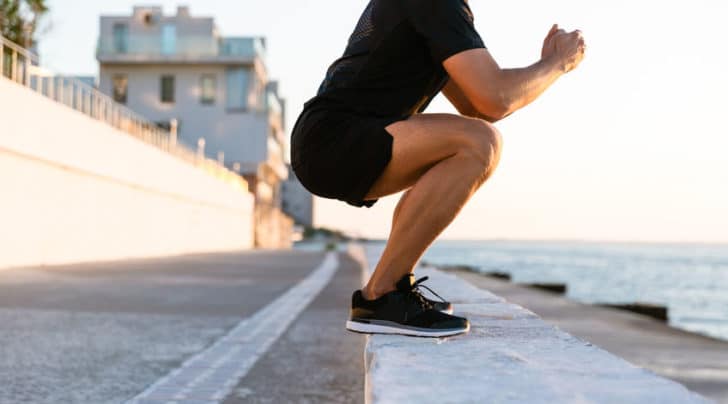
Strength training produces better runners. But many runners are confused about what type of strength training to do. We know that runners should engage in strength training to perform better and hopefully prevent injuries. However, just like we should warm-up, meditate, and eat healthy regularly – we don’t always know how to integrate these habits into our current routine and lifestyle. How many articles do you come across on the internet about “The top 5 exercises every runner should be doing” or “Do just these three exercises before your next run to prevent injuries?”
Every article includes a different exercise, and most of them do not expressly state when is best to do them. In addition, most posts reiterate the importance of strength training but don’t teach you the “how” of creating a program for yourself. Thus, we become frustrated, confused, and disheartened, leading to fall-off.
Strength training has brought my running to a new level. My core is tight, I don’t wobble side to side, and I’m climbing hills with legs that don’t tire.

Most runners think that running alone will strengthen their legs. That’s not really true. Running can stimulate your aerobic development when you concentrate on zone 2 training. Running can stimulate your glycolytic energy system, too… we discussed that in this post on lactate thresholds. But running alone requires strength… it doesn’t build strength as well as resistance training.
For runners over 40, adding muscle mass helps prevent sarcopenia… the leading cause of frailty. Each year we lose up to 1% of our muscle mass and 3% of our muscle strength. Muscle mass impacts our longevity and ability to maintain an independent and active lifestyle well into our 80s and beyond.
This article will help you understand what muscle groups are essential, which exercises target these muscle groups, and how to put a program together to start strength training now.
Which Muscles Should I Strengthen for Running?
The simple answer is – ALL of them. Running is a full-body sport. Your arm swing affects your lower body mechanics, your foot strength affects your hips, your upper back posture changes your core activation, etc. If you only strengthen your legs, you miss half of your body and vice versa. This is why full-body, functional movements become some of the best exercises for runners.
You may have heard that runners need glute strength. Right? You’ve all heard that a strong butt is a key to being a happy runner. This is true, especially regarding pelvic and knee stability. However, runners also need strong quads, powerful hamstrings, and explosive calves/Achilles tendons to generate forward propulsion. Here are the main muscle groups to highlight in your strength routine:
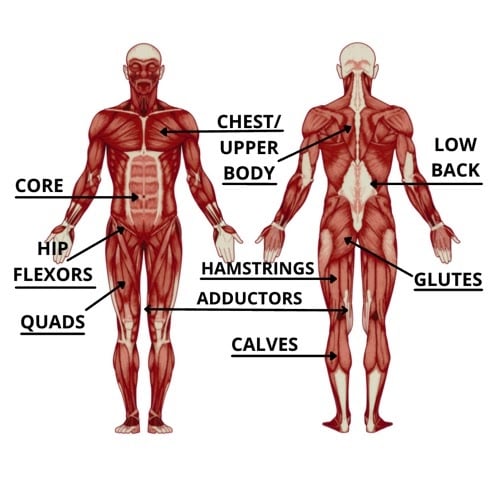
Glutes: powerful hip extension, low back, pelvic stability, and stabilizing the knee and foot at the initial loading response of gait. Quadriceps: extends the knee and propels forward, and stabilizes the knee joint as you make contact with the ground. Hamstrings: powerful hip extensor, generate forward propulsion while creating posterior stability to the knee joint. Hip Flexors (i.e., psoas): drive your knee forward and stabilize the hips during the stance phase. Adductors (inner thigh muscles): stabilize the pelvis and hips during the stance phase. Also, help with knee stability on the medial aspect of the joint. Calves: assist in the final phases of propelling your body forward while controlling ankle mobility/balance as your foot hits the ground. Core and Low back: important for balance, posture, and reducing stress to the spine. Chest, Arms, and Mid Back: important for posture, spinal alignment, and arm swing. A proper arm swing is crucial for minimizing excessive pelvic rotation and lower extremity injuries. |
When Should I Do Strength Exercises?
As a runner, it can be challenging to find time for strength training as we often find “fitting in a run” is just as hard some days. With a full-time job, kids, and other miscellaneous “shoulds,” strength training becomes the last thing on our to-do list. Yet, if we change our mindset to consider strength exercises as part of our “workout” or “training program,” it gains more importance in our minds and has a better chance of getting done. So – when should I do these exercises?
The ultimate answer is – whenever it works best for you! Yes, there is an “ideal” time to do strength training; however, I understand that it isn’t always realistic to ask a mother of 3 young children to do her strength exercises in the evening when she is also trying to cook dinner, finish up work, and trying to get her oldest to do his homework. SO – if this mom of 3 only has time to do strength from 9:00 – 9:30 a.m. after dropping her kids off at school, then by all means, that is the best time for YOU to do your strength training.
That said, if your schedule is more flexible, then here are the times I find most beneficial for structuring strength training into your running routine:
Strength train on harder running days: this could be after a track workout, a tempo workout, or a long run. The reason for this is to make sure your “rest days” or “easy run” days are exactly that – easy and meant for recovery. No use in adding an extra stimulus these days.
IF you are doing a hard run and strength in the same day → Strength train AFTER your run. There is some debate on this; however, research proves that resistance-based exercise can cause muscular stress lasting up to 72 hours (aka Delayed Onset Muscle Soreness). Therefore, a stress-induced muscle will likely not function at its best afterward – especially while running.
This New York Times article highlights the benefits of strength training after cardio workouts, especially if both workouts target separate muscle groups (i.e., 20 min intense cycling followed by upper body weight lifting).
IF you are running easy and doing strength on the same day, you have some flexibility when either happens. Research has shown that delayed onset muscle soreness (DOMS) will not impede muscular performance during a submaximal run after strength exercises. However, don’t plan a hard intensity run the following day as your DOMS could inhibit proper performance and lead to injury.
Example Week Run/Strength Routine:
Monday: Easy Run
Tuesday: Track workout AM, Strength Training PM
Wednesday: Easy Run
Thursday: Tempo Run AM, Strength Train PM
Friday: Easy Run
Saturday: Long Run, Core exercises soon afterward
Sunday: Rest day
What are Good Strength Exercises for Running?
The best exercises incorporate full-body, functional movements that are sport-specific. Here are some examples of exercises targeting the muscle groups mentioned above. Use the images or access the entire progression of the exercise by clicking on the links below. Learn how to incorporate these exercises into a full weekly routine by reading the following sections.
- Squats: Glutes, Quads, Core, and Calves
- Deadlifts: Glutes, Hamstrings, Low Back, Core, Calves
- Step-Ups: Glutes, Quads, Calves, Hamstrings
**Steps up are one of the best exercises shown in research to stimulate gluteus maximus activation and strength.
- Banded Hip Flexion: Hip flexors, Core, Quads, Opposite Glute (standing leg)
- Lateral Toe Tap Mini Squats: Quads, Glutes, Core, Calves
- Forward Heel Taps (off step): Quads, Glute, Core
- Standing Fire Hydrants: Glutes (specifically medius and minimus), Core, Calves
- Standing Hip Adduction: Hip Adductors, Core, Stabilization in standing leg
- Plank Leg Extensions: Core, Glutes, Quad and hip flexor of stabilizing leg, Shoulders
- Renegade Rows: Upper Back, Bicep/Tricep, Core, Quads and hip flexors
- Single Leg Bridge: Glute Maximus, Hamstring, Calves, Core
- Calf Raises: Calves, Glutes, Hamstrings
For more exercise ideas, visit my other articles related to leg strength exercises, why you should be squatting, and the importance of incorporating balance training into your exercise regime.
Again… A typical week could look like this.
- Monday: Easy Run
- Tuesday: Track workout AM, Strength Training PM
- Wednesday: Easy Run
- Thursday: Tempo Run AM, Strength Train PM
- Friday: Easy Run
- Saturday: Long Run, Core exercises soon afterward
- Sunday: Rest day
A Weekly Strength and Running Plan
Here is an example of how a recreational runner can safely incorporate strength training and running into their weekly exercise plan.
The plan above is only a general guideline. Each person will vary on aspects of their training plans depending on their schedule, base fitness level, and other comorbidities/injury history.


